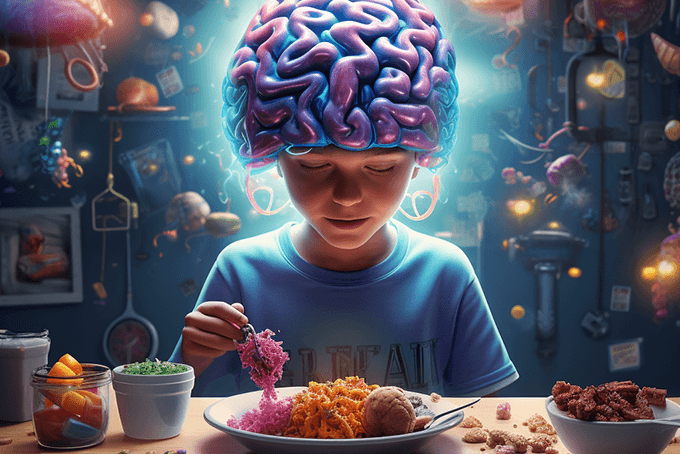The right brain is an important part of who we are, but is often pushed to the side with the dominant left-brain taking control. The left-brain is in charge of logical sequencing, rational thought, and analytical reasoning. But, the right brain aids in subjective thought, holistic thinking, and intuition – all essential parts of development and learning. With most educational settings focused on teaching to the left-brain, often the right brain is neglected, leaving out an important part of brain development.
Right brain learning theory is the idea of focusing learning on the right hemisphere of the brain. There are ways adults can adjust teaching situations within the classroom or home to encourage the child to support the right brain and tap into all it has to offer. The right brain offers skills that will help promote and create a smarter and more productive adult better suited for the future workplace. Daniel Pink, author and educational speaker, finds there are six right brain senses that are beneficial including learning the value of:
- more than just function, but also design.
- more than argument, but also story.
- more than the focus, but the symphony.
- more than just the logic, but also the empathy.
- not just the seriousness, but also the play.
- not just accumulation, but also the meaning.
Teaching to the Right Brain
Through these ideas, adults can create simple opportunities to encourage right brain learning and development in ways that are fun and also educational for all involved. Thinking of each of Pink’s six concepts, ways to encourage right brain development include:
Design: Along with teaching mathematical or logical concepts, include opportunities for drawing and visual expression. Tying art and math into a project allows for the logical left-brain to meld together with the creative right, encouraging whole brain functioning. Try offering a ruler to the child to encourage mathematical understanding while creating an imaginative building out of simple shapes.
Story: Encourage the child to read out loud within the classroom or at home while doing homework or learning new concepts. Once directions have been read, the child can expand and extrapolate offering his own thoughts and ideas. Letting each child take a turn also encourages listening skills, retention, and patience.
Symphony: Find ways to use cross-disciplinary teaching concepts and disciplines and learn by doing as often as possible. Hands on activities, such as doing puzzles or measuring ingredients and baking bread encourage the mathematical left-brain to work in harmony with the creative right.
Empathy: Role playing and imaginary play are ways to tap into the inner need to show empathy and sympathize. By offering the child opportunities to use his imagination while learning, he will encourage his abilities and foster the development of a well-rounded individual. Setting up a pretend play spot in the classroom or home is an easy way to encourage imaginary play and development.
Play: Without play and experimentation, the child would be stagnant and lack motivation to learn. Including fun and games to support learning concepts within the classroom or home offers the child opportunities to learn from mistakes without pressure and explore the concept of fun and humor. Playing Pictionary with vocabulary words is an enjoyable and educational way to spend classroom time or hone language skills within the home.
Meaning: The concept of ethics and respect are important to the child when working with others and learning new things. Inviting the child to share his feelings, beliefs, and concepts motivates his mental growth. Encouraging research on opposite beliefs and ideas promotes understanding and knowledge.
Learning: When the child finds an area they excel or are interested in, he is more motivated to learn. Tying areas of interest into learning activities keeps the experience relevant and interesting. If the child finds playing video games to be enjoyable, encourage him to research the aspects of creating a game from start to finish – and then to create a video game of his own.
Right brain learning can be accomplished through a bit of extra work and understanding. While working with the child to encourage his right brain development, you might find your own right brain excelling, too.



